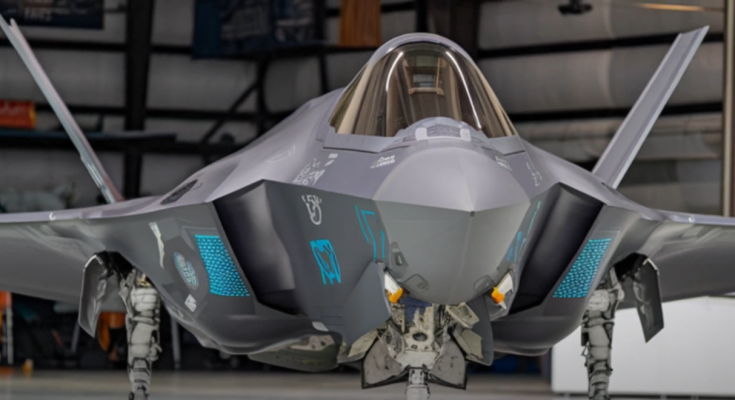The Lockheed Martin F-35 Lightning II, set to continue its evolution in 2025, is one of the most advanced multirole stealth fighter jets in the world. Designed to perform a variety of missions across air, ground, and maritime domains, the F-35 has become a cornerstone for modern air forces. The 2025 version of the F-35 brings with it impressive upgrades and refined capabilities, further cementing its status as the most versatile and formidable fighter jet in the skies. Below is a comprehensive review of the F-35’s ultimate features and enhancements for 2025.
Next-Generation Stealth
Stealth remains a defining feature of the F-35, and the 2025 version continues to push boundaries in this regard. The aircraft employs cutting-edge stealth technology that makes it nearly invisible to radar and infrared detection systems. The airframe design is optimized with advanced radar-absorbent materials (RAM) and improved aerodynamic shaping, reducing its radar cross-section (RCS) to near-zero. The F-35’s low observability extends to its infrared signature, making it even harder for enemy systems to track the aircraft in both offensive and defensive situations.
Advanced Avionics and Sensor Fusion
The F-35’s avionics suite has always been one of its key strengths, and for 2025, Lockheed Martin has further improved this area. The fighter integrates sensor fusion technology, combining data from a range of sensors—radar, infrared, and electronic warfare systems—into a unified operating picture for the pilot. The AN/APG-81 radar, one of the most advanced in the world, provides long-range target detection, tracking, and identification. Additionally, the Distributed Aperture System (DAS) offers a 360-degree view of the battlefield, including infrared imagery for superior situational awareness.
The helmet-mounted display system (HMDS) is another hallmark feature, allowing pilots to view crucial flight data directly on their visor, giving them the ability to track targets, threats, and navigation information without ever looking down. This enhances decision-making speed and precision, especially in high-stress combat environments.
Superb Multirole Capability
The F-35 is designed to be a multirole fighter, capable of executing a wide range of missions, from air superiority and strike operations to close air support and intelligence, surveillance, and reconnaissance (ISR). In 2025, its flexible mission capabilities are even more pronounced. The aircraft can perform air-to-air combat using a variety of advanced missiles, including the AIM-120 AMRAAM, and air-to-ground strikes with precision-guided bombs and rockets. Additionally, the F-35B variant, capable of vertical/short takeoff and landing (V/STOL), enhances versatility, enabling operations from small aircraft carriers, forward operating bases, and austere environments.
One of the major upgrades for 2025 is its ability to carry hypersonic weapons, significantly improving its strike potential against heavily defended targets. Coupled with enhanced targeting and weaponry systems, the F-35 can conduct precise and rapid strikes, even in heavily contested environments.
Unmatched Situational Awareness and Autonomy
The F-35 is equipped with the most sophisticated situational awareness system in the world, enabling pilots to make faster, more informed decisions in combat. The integration of advanced AI-driven software allows for predictive maintenance, real-time battle damage assessments, and even mission planning automation. The AI can assist pilots by suggesting optimal attack vectors or performing certain mission-critical tasks autonomously, such as managing energy during combat, tracking threats, and optimizing weapon deployment.
Next-Gen Cockpit and Pilot Interface
The cockpit in the 2025 F-35 has been redesigned for even greater efficiency. The touchscreen interfaces are more responsive, and the overall ergonomic design of the cockpit has been enhanced to reduce pilot fatigue. The inclusion of voice-activated controls and gesture recognition adds a layer of convenience, allowing the pilot to interact with the aircraft’s systems without distraction. This makes the F-35 easier to operate in complex and high-stakes combat situations.
Networked Operations and Interoperability
The F-35 is built for networked warfare, able to seamlessly share data with other aircraft, ground units, and naval assets. In 2025, its interoperability capabilities are upgraded, allowing it to function as a key node in joint operations. It can relay targeting data to allied aircraft or receive real-time battlefield updates from other platforms, ensuring that it operates within a broader, more cohesive network.
Conclusion
The 2025 Lockheed Martin F-35 Lightning II represents the pinnacle of modern aerial warfare, combining unmatched stealth, advanced avionics, multirole versatility, and cutting-edge automation to create an aircraft that is as deadly as it is adaptable. Its continued evolution cements its place as the backbone of the world’s air forces for years to come, ensuring that it can handle any mission, in any environment, with unparalleled effectiveness. Whether conducting precision strikes, providing close air support, or engaging in air dominance, the F-35 remains the ultimate fighter aircraft of the 21st century.



